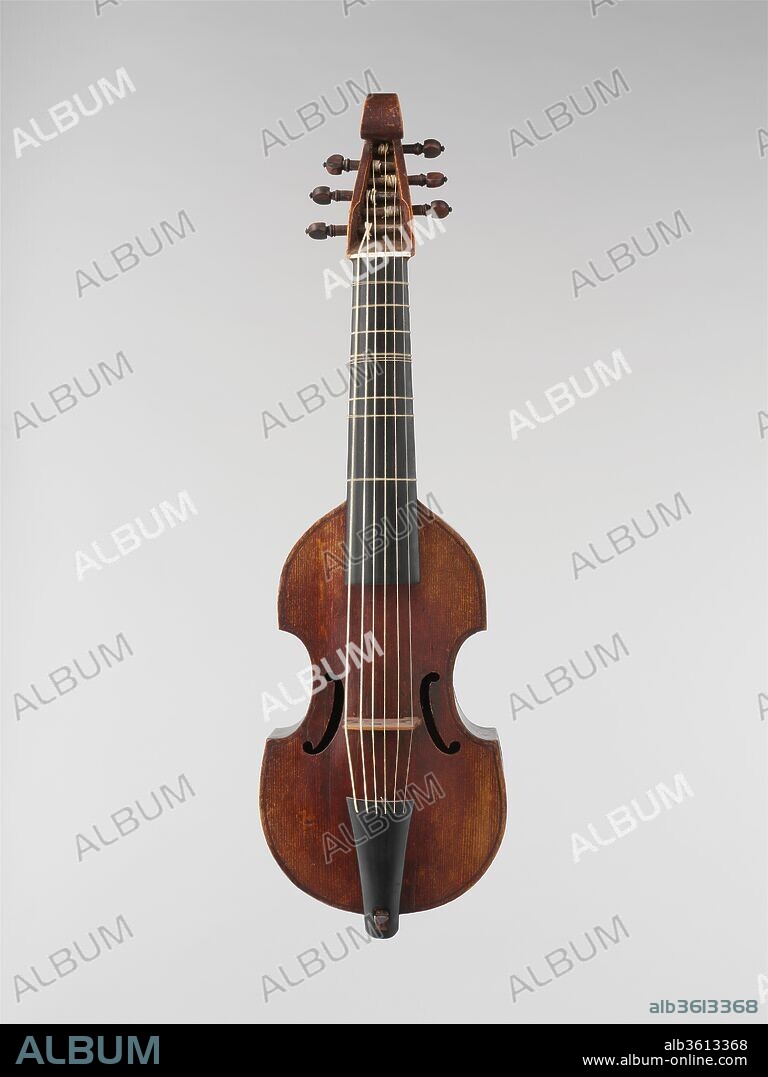alb3613368
Treble Viol

|
Zu einem anderen Lightbox hinzufügen |
|
Zu einem anderen Lightbox hinzufügen |



Haben Sie bereits ein Konto? Anmelden
Sie haben kein Konto? Registrieren
Dieses Bild kaufen.
Nutzung auswählen:

Titel:
Treble Viol
Untertitel:
Siehe automatische Übersetzung
Treble Viol. Culture: French. Dimensions: Body length: 34.5 cm.
Body width: upper bout 16.5 cm.
center bout 11.2 cm.
lower bout 19.5 cm.
Rib height: top block: 5.4 cm.
center bout 6.95 cm
bottom block 7/15 cm.
String length: 37.0 cm.. Maker: Jean Ouvrard (French, Paris ca. 1720-1748 Paris). Date: 1726.
This treble viol retains its original neck, fingerboard, and tailpiece, and is a rare example of a professional musician's instrument in unaltered condition. Viols were the most esteemed bowed instruments of the late Renaissance, and only gradually displaced by the violin family in the eighteenth century. Viols feature flat backs, sloping shoulders, and six or seven strings, all features which distinguish them from members of the violin family. All viols are played in an upright position between the knees, or da gamba ("at the leg"), and the bow is held palm upwards. Their sound is quieter and less brilliant than that of the violin family, yet considered more pleasing to the ear by Renaissance humanists. Chamber music for consorts of four to six viols was composed during the Renaissance and Baroque eras, and solo works for the bass viol were played until nearly the end of the 18th century.
Technik/Material:
MADERA
Museum:
Metropolitan Museum of Art, New York, USA
Hersteller:
Jean Ouvrard (French, Paris ca. 1720-1748 Paris)
Bildnachweis:
Album / Metropolitan Museum of Art, NY
Freigaben (Releases):
Bildgröße:
3150 x 4200 px | 37.9 MB
Druckgröße:
26.7 x 35.6 cm | 10.5 x 14.0 in (300 dpi)
Schlüsselwörter:
 Pinterest
Pinterest Twitter
Twitter Facebook
Facebook Link kopieren
Link kopieren Email
Email
